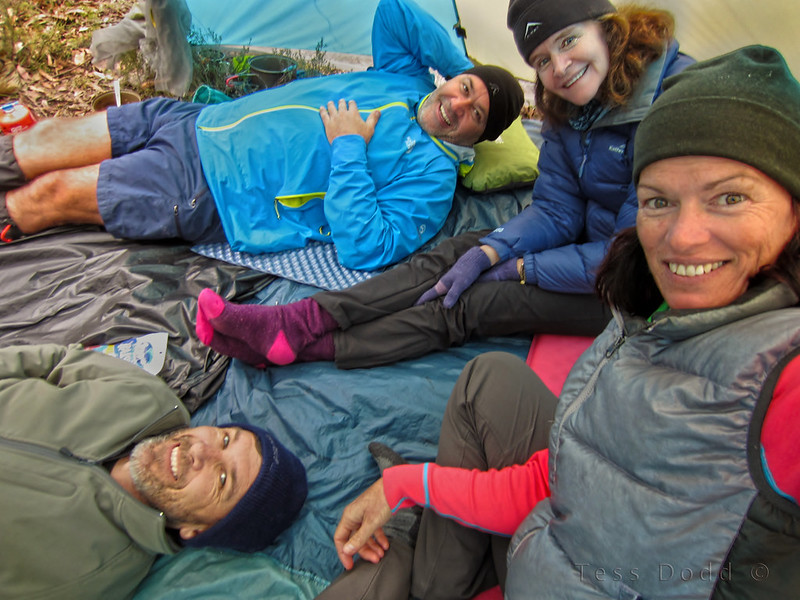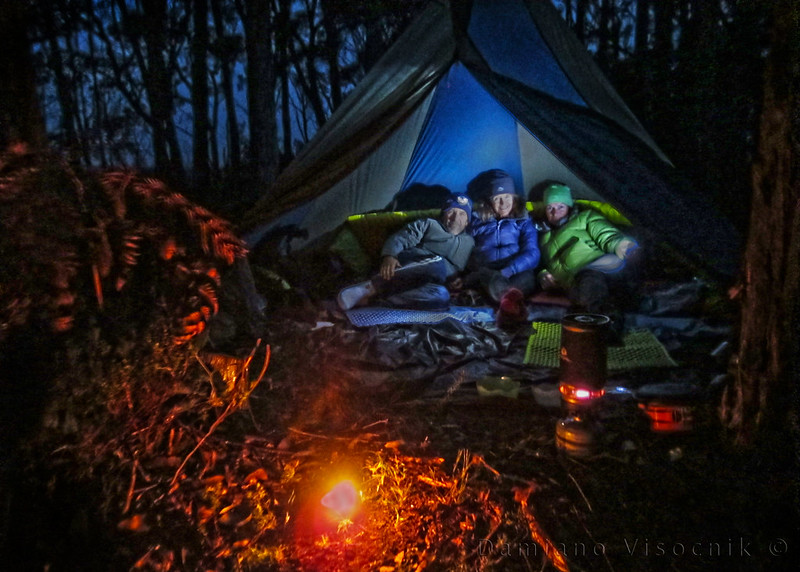The new Northern Light paddle recently received is different: it's a shoulderless version of the three piece carbon fibre Greenland paddle that Paul produces.
The sectional loom is the same as all the other Northern Light paddles (Greenland and Aleut) but this blade is much narrower than my standardGreenland paddle, which I have been using for all my
paddling.
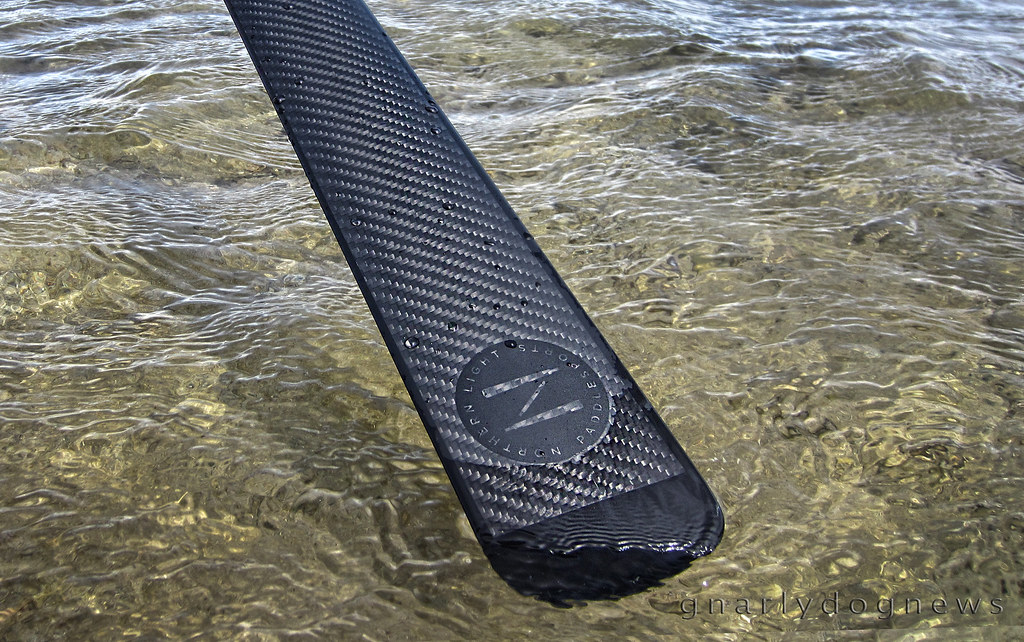
I have grown to love the Northern Light Greenland paddle that, despite my best efforts to destroy it, has never let me down.
Despite me abusing it, all I managed to create was a hairline crack in the insert after a wave dump and high brace onto a bank of sand, which was later easily repaired.
No other paddle would stand up to the abuse I now subject my Northern Light paddles.
The new carbon-fibre Northern Light paddle is shoulderless and my hands slide along the shaft without feeling the familiar notch of the shoulder. Initially I thought I needed to feel my hands centred on the paddle and the blade’s shoulders of myGreenland were the reference point, but
as I paddle kayaks with skegs I tend to wiggle a bit and often extend the
paddle on one side.
Ruddered kayakers find it odd that waves slide my kayak sideways a bit and make it broach just so slightly needing corrective strokes.
To address directional changes I use sliding strokes where my hands let the paddle extend to one side; all without being even aware of such technique.
I no longer keep my hands in the exact same position on the loom (as I used to with Euro paddles); they are literally all over the place.
When I want to accelerate hard I extend myGreenland
paddle to insert more blade into the water and create more resistance. If I want to correct my direction a bit, I extend
the paddle and slightly sweep, all unconsciously. This new paddle lends
itself perfectly to my “wandering’ hands.
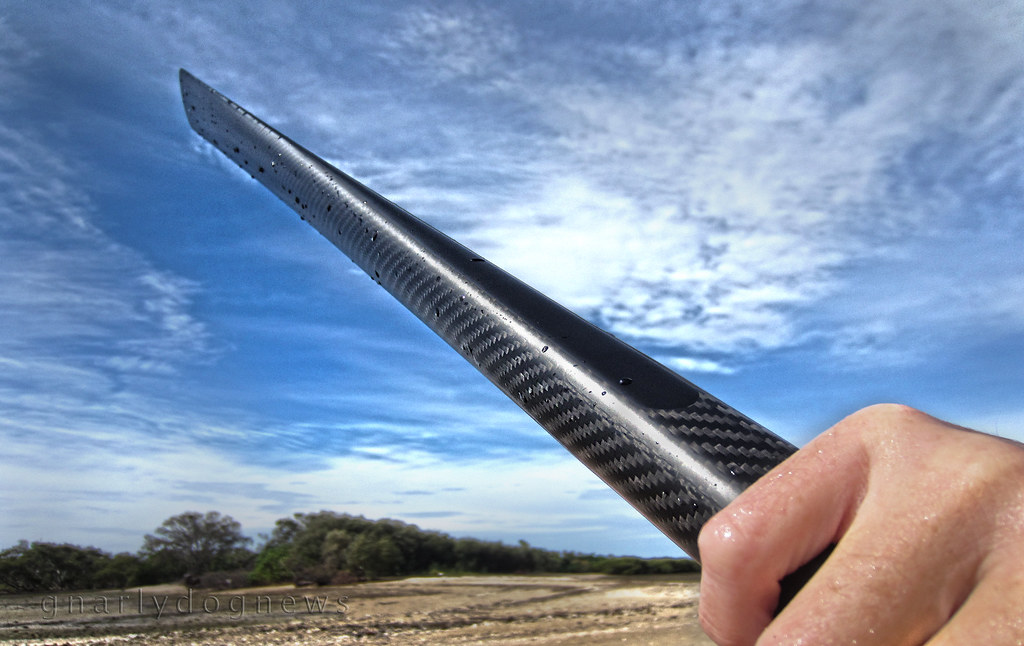
The Northern
Light “Skinny” Greenland is
incredibly smooth and has an organic feel in my hands.
The edges are very fine allowing silent insertions into the water; canted strokes feel effortless. It literally slices through the water.
The “Skinny” has been in the works for a while and Paul spent a lot of time talking to some of the best known Greenland kayakers like Maligiaq and Dubside before he and Carlos (his former partner) came up with the dimensions for this paddle.
The paddle has actually been in production, with prototype testing going on for over a year now.
I thought that such
diminutive paddle (if compared to big blade Euro style) would lack purchase resulting
in reduced kayak speed.
But as Maligiaq demonstrates, a fine edgedGreenland paddle used with
correct technique (canted) and a higher cadence can produce hull speeds equal
to larger blades, the proof seems clear in his results against world class
sprinters.
As the blade is so fine I expected to experience some flutter, as mostGreenland paddles seem to have in the first ten minutes
or so until my brain “learns” the traits of the new blade and adjusts.
The “Skinny” was immediately at home with me and no adjustment was needed. Canting it was super easy (maybe it’s the pronounced flat surface on the loom) and I noticed no splash, even if I purposely tried to use a sloppy stroke. It was also a surprise to see rank beginner kayakers trying this paddle and loving it immediately with very little wobble when sprinting.
The sectional loom is the same as all the other Northern Light paddles (Greenland and Aleut) but this blade is much narrower than my standard

I have grown to love the Northern Light Greenland paddle that, despite my best efforts to destroy it, has never let me down.
Despite me abusing it, all I managed to create was a hairline crack in the insert after a wave dump and high brace onto a bank of sand, which was later easily repaired.
No other paddle would stand up to the abuse I now subject my Northern Light paddles.
The new carbon-fibre Northern Light paddle is shoulderless and my hands slide along the shaft without feeling the familiar notch of the shoulder. Initially I thought I needed to feel my hands centred on the paddle and the blade’s shoulders of my
Ruddered kayakers find it odd that waves slide my kayak sideways a bit and make it broach just so slightly needing corrective strokes.
To address directional changes I use sliding strokes where my hands let the paddle extend to one side; all without being even aware of such technique.
I no longer keep my hands in the exact same position on the loom (as I used to with Euro paddles); they are literally all over the place.
When I want to accelerate hard I extend my

The edges are very fine allowing silent insertions into the water; canted strokes feel effortless. It
But as Maligiaq demonstrates, a fine edged
As the blade is so fine I expected to experience some flutter, as most
The “Skinny” was immediately at home with me and no adjustment was needed. Canting it was super easy (maybe it’s the pronounced flat surface on the loom) and I noticed no splash, even if I purposely tried to use a sloppy stroke. It was also a surprise to see rank beginner kayakers trying this paddle and loving it immediately with very little wobble when sprinting.
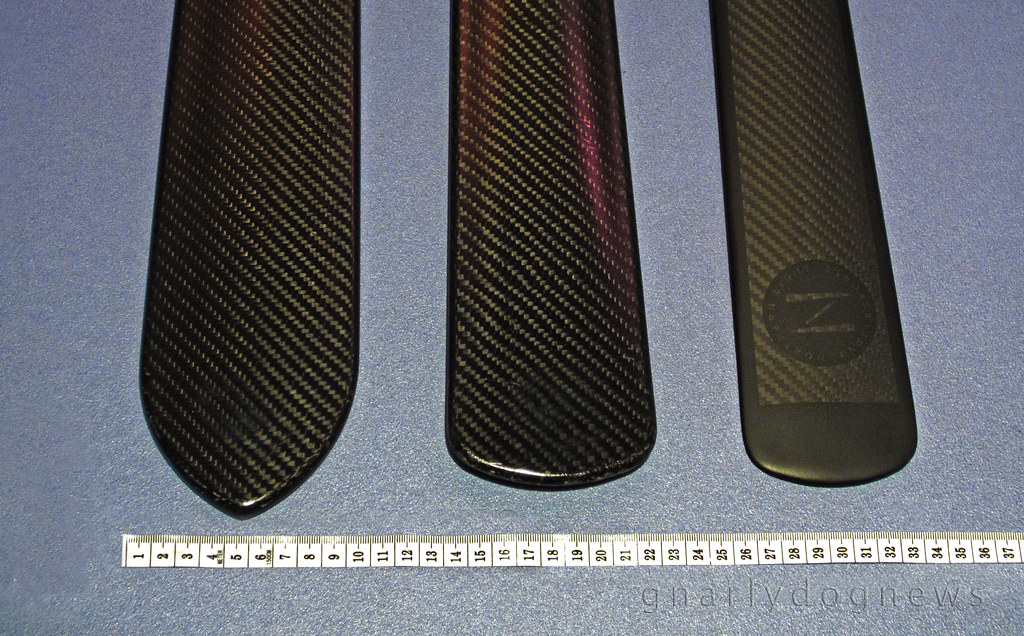
Northern Light paddles size comparison: Aleut, Greenland and "Skinny"
Small hands will find this skinny paddle easier for sculling (compared to the standard
Furthermore the "Skinny" can be converted from a full size adult paddle to a perfect child paddle; this was a very important consideration when designing this paddle.
With the use of the included insert the "Skinny" makes a smooth paddle for the budding new paddler.
Weighing a bit less than the standard Northern Light Greenland the "Skinny" is just as modular as the original.
Paul has maintained the concept of a 3-piece paddle where the loom is the variable part to accommodate for different size paddlers.
The unique ability to break down the paddle in sections small enough to allow air travel as part of check-in luggage (fits perfectly inside a large duffel bag) makes this paddle a trusted companion for remote locations.
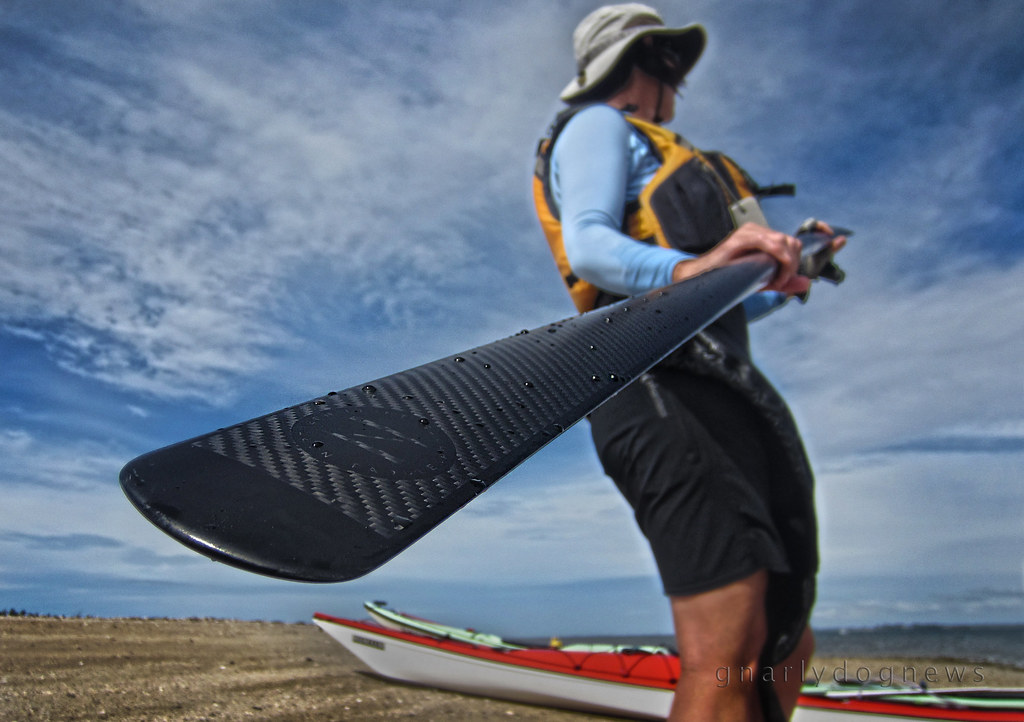
But how does it handle the choppy waves?
No different than the larger sister original Northern Light Greenland.
So why not use the “skinny” all the time?
All paddles have their strengths and the NLP “Skinny” is no different. The sharp edges lend themselves to more technical paddling as it slices through the water allowing for a higher cadence when paddling distances and also for sculling rolls. A lot of times a thicker paddle allows one to rely on the volume to auto correct a bit when rolling. The “Skinny” requires good technique in this regard.
The noticeable difference I could feel was when I accelerated from a standing start; I felt just a little bit less resistance in the water and maybe a stroke more was needed to bring my kayak to cruising speed.
Side by side with my paddling partner Adventuretess we swapped paddles back and forth; using a perfectly synchronized stroke our kayaks maintained the exact same speed.
I can only conclude that the “Skinny” offers enough hydraulic resistance to propel a kayak to hull speed.
I had no chance to try the “Skinny” in the surf yet, where a big blade is desirable to be able to suddenly accelerate down the face of a wave; that’s where the Northern Light Aleut shines.
On my planned trip to the land of the long shadows I was planning to take the standard “fatty”; I am now reconsidering and want to have the "Skinny" with me.

